The Arabic Contribution
The development of the Muslim Empire in the Mediterranean area created a new cohesive world. After a period of internal political turmoil, the Abbasid dynasty consolidated its power and established a new capital, Baghdad, in 762. Increased urbanization, wealth, and stability during the 9th century fostered scientific and cultural development. Scholars and scientists, using Arabic as an international language, began to examine Greek scientific and medical texts, many of which had been gathered and translated into Syriac during the 6th century by Syriacs, a Christian population located at the edge of the Byzantine and Persian empires.
The Role of the Syriacs
During the 9th century, many Syriac scientists with knowledge of Arabic were active in Baghdad. They translated Greek scientific works from Syriac into Arabic, making it possible for Muslim scientists to assimilate this material into their practices, and to augment it with their own contributions.
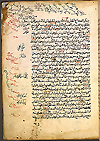
This treatise on materia medica attributed to Yuhanna Ibn Bukhtishu, a member of a family of Syriac physicians, includes both Greek and local medicinal substances.
Manuscript A 45, f. 3 recto.
Translating from Greek
As Arabic scientists traveled to Byzantium, they learned Greek and acquired copies of the Greek treatises, which they translated into Arabic. The most famous of these translators was Syriac Hunayn Ibn Ishaq.
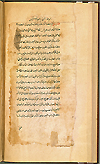
This Latin translation of a Hippocratic treatise was originally translated by Hunayn Ibn Ishaq directly from Greek into Arabic.
Manuscript A 27, f. 1 verso.
Transformation
Greek knowledge remained the basis of medicine in the Arabic world. Physicians annotated and commented on classical texts as they read them, including references to their own practices. They also developed new ways of presenting textual data. In the field of materia medica, for instance, they created tables that standardized relevant information about medical substances.
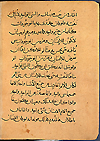
This is the only extant copy known of his work, an Arabic translation of the Hippocratic treatise, "On the nature of man", with a signed commentary by Ibn al-Nafis.
Manuscript A 69, f. 4 verso.
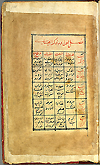
Tables on the properties of substances used as foodstuffs in the work by al-Din 'Ali al-Isfahani.
Manuscript P 16.1. f. 110 recto.
Illustrations
The artists who illustrated Arabic scientific works continued the Greek tradition of visually representing plants and animals. They based their drawings on traditional Greek representations such as those of the Vienna Dioscorides, that is, a Greek copy of Dioscorides’ De materia medica, ca. 513, currently preserved in Vienna, Austria. Often the illustrators improved on the original drawings by introducing new figurative elements.
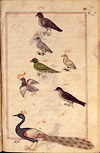
Representations of birds in this text are in a style similar to traditional Greek drawings of animals.
Manuscript P 2, f. 185 verso.
Last Reviewed: May 2, 2012


